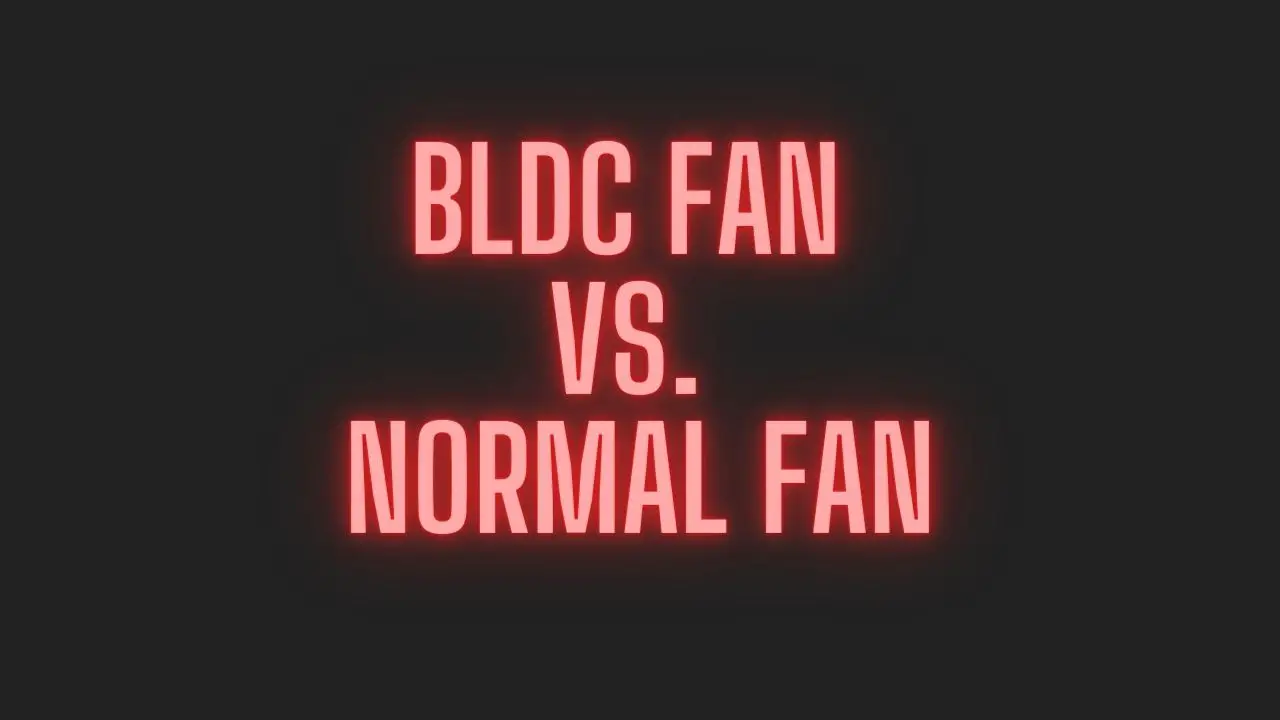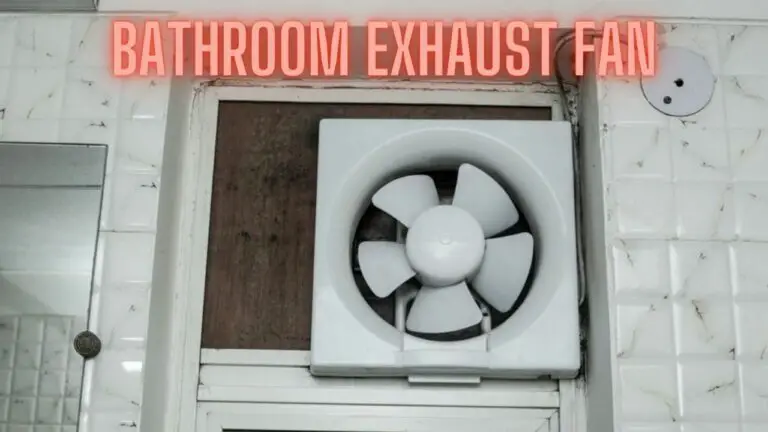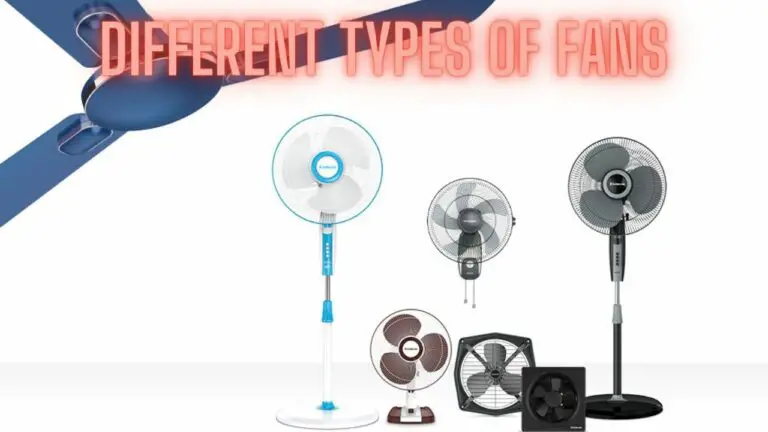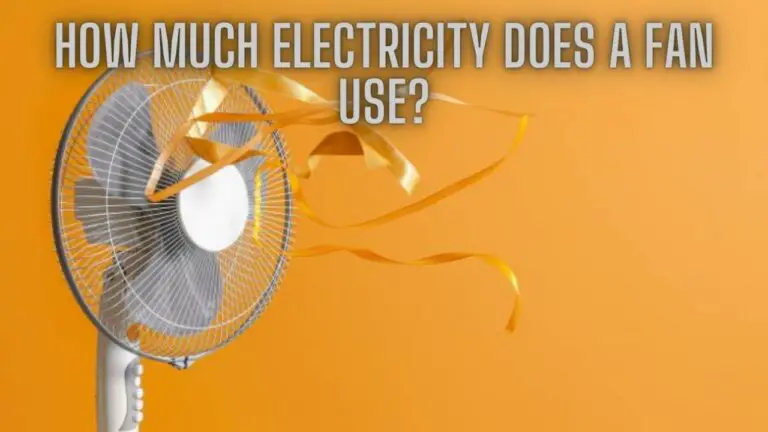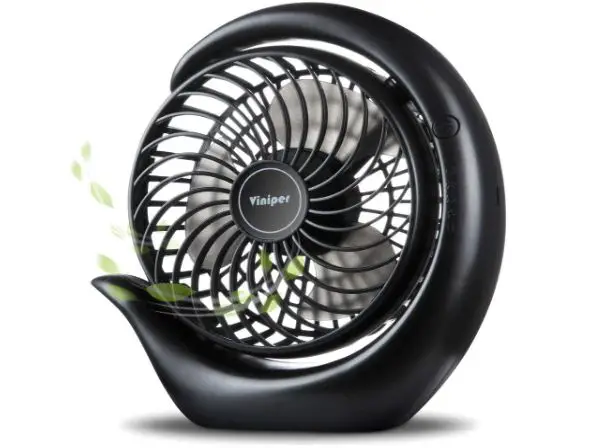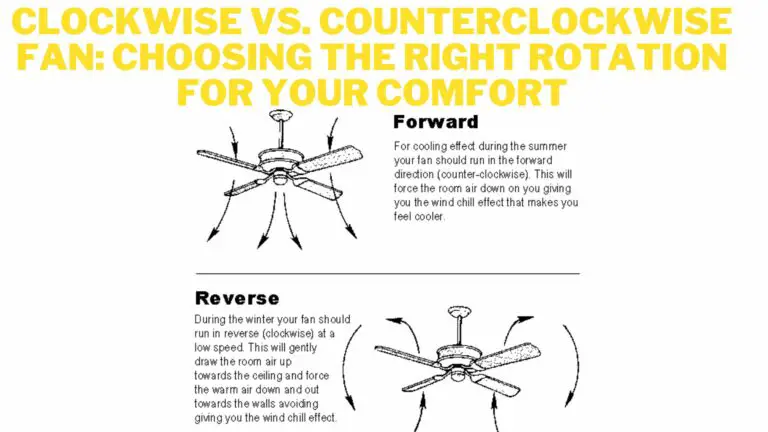BLDC Fan vs. Normal Fan – Which One Should You Choose?
Introduction
In the realm of cooling solutions, fans play a pivotal role in maintaining comfortable environments, whether in residential, commercial, or industrial settings. With the advent of Brushless DC (BLDC) technology, a new contender has emerged in the form of BLDC fans, offering advancements in efficiency and performance over traditional induction fans, also known as normal fans. This comparison aims to shed light on the differences between BLDC fans and normal fans, exploring their respective technologies, energy efficiency, noise levels, speed control capabilities, longevity, cost considerations, environmental impact, and practical applications. By understanding these distinctions, consumers can make informed decisions when selecting the optimal cooling solution for their needs.
Technology and Working Principle
BLDC Fans:
Brushless DC (BLDC) fans utilize advanced motor technology that differs significantly from traditional induction fans. BLDC fans feature a brushless motor design, where the rotor contains permanent magnets and the stator houses electromagnets. Unlike induction motors, BLDC motors do not require brushes to commutate the motor, leading to reduced friction, lower heat generation, and longer lifespan.
The working principle of BLDC fans involves electronic control systems that precisely regulate the power supplied to the motor windings. This electronic control allows for efficient and variable-speed operation, enabling BLDC fans to adjust their rotational speed based on demand. Additionally, BLDC fans often incorporate sensors and feedback mechanisms to monitor speed, temperature, and load conditions, further optimizing performance and energy efficiency.
Normal Fans:
In contrast, normal fans typically utilize induction motors, which consist of a rotor and stator with coils of wire. When connected to an alternating current (AC) power source, the alternating magnetic fields induce eddy currents in the rotor, causing it to rotate. Normal fans operate at fixed speeds determined by the frequency of the AC power supply, typically 50 or 60 Hz.
The working principle of normal fans is straightforward, relying on the interaction between magnetic fields to produce rotational motion. However, due to the inherent design limitations of induction motors, normal fans lack the efficiency and speed control capabilities of BLDC fans. Additionally, the presence of brushes and physical commutation in induction motors can lead to greater friction, heat generation, and wear over time compared to BLDC motors.
In summary, BLDC fans leverage advanced motor technology and electronic control systems to deliver superior efficiency, variable-speed operation, and longevity compared to traditional induction fans. This technological difference underpins many of the performance advantages associated with BLDC fans, making them a compelling choice for various cooling applications.
Energy Efficiency
BLDC Fans:
Brushless DC (BLDC) fans are renowned for their exceptional energy efficiency compared to traditional induction fans. The efficiency of BLDC fans stems from several key factors:
- Variable-Speed Operation: BLDC fans can adjust their rotational speed based on demand, allowing them to operate at optimal speeds for different cooling requirements. By dynamically adjusting the fan speed, BLDC fans can minimize energy consumption during periods of lower cooling demand.
- Electronic Control: BLDC fans utilize electronic control systems to precisely regulate the power supplied to the motor windings. This electronic control enables efficient power conversion and minimizes energy losses associated with traditional motor commutation methods.
- Reduced Friction and Heat Generation: The brushless design of BLDC motors eliminates the need for brushes, reducing friction and heat generation during operation. This design feature contributes to overall energy efficiency and extends the lifespan of BLDC fans.
- Advanced Motor Technology: BLDC motors employ permanent magnets in the rotor and electromagnets in the stator, resulting in higher power density and improved efficiency compared to induction motors.
Overall, BLDC fans offer significant energy savings over traditional induction fans, making them a preferred choice for environmentally conscious consumers and organizations seeking to reduce energy costs.
Normal Fans:
In contrast, normal fans with induction motors operate at fixed speeds determined by the frequency of the alternating current (AC) power supply. These fans lack the variable-speed operation and electronic control systems found in BLDC fans, limiting their energy efficiency. Additionally, the presence of brushes and physical commutation in induction motors can lead to energy losses due to friction and heat generation.
While advancements in motor design and power electronics have improved the energy efficiency of some induction fans, they generally cannot match the efficiency levels achieved by BLDC fans. As a result, BLDC fans are increasingly preferred for applications where energy efficiency is a priority, such as residential cooling, commercial HVAC systems, and industrial ventilation.
Noise Levels
BLDC Fans:
BLDC fans are known for their quiet operation, thanks to their advanced motor technology and electronic control systems. Several factors contribute to the low noise levels of BLDC fans:
- Smooth Operation: BLDC motors operate with minimal friction and vibration, resulting in smoother and quieter operation compared to traditional induction motors. The absence of brushes in BLDC motors reduces mechanical noise and eliminates the characteristic humming sound associated with brush wear.
- Variable-Speed Control: BLDC fans can adjust their rotational speed based on demand, allowing them to operate at lower speeds when cooling requirements are minimal. By running at lower speeds, BLDC fans generate less air turbulence and noise compared to fixed-speed fans.
- Electronic Control: The electronic control systems used in BLDC fans enable precise regulation of motor speed and acceleration, minimizing sudden changes in fan speed that can contribute to noise generation. Additionally, advanced motor control algorithms optimize efficiency and reduce audible motor noise.
Overall, BLDC fans are designed with noise reduction in mind, making them suitable for environments where quiet operation is essential, such as bedrooms, offices, and libraries.
Normal Fans:
Traditional induction fans can vary in noise levels depending on factors such as motor design, fan blade configuration, and operating conditions. However, compared to BLDC fans, normal fans may produce higher levels of noise due to several reasons:
- Mechanical Wear: The presence of brushes in induction motors can lead to mechanical wear over time, resulting in increased noise levels as the brushes contact the motor’s commutator.
- Fixed-Speed Operation: Normal fans typically operate at fixed speeds determined by the frequency of the AC power supply. At higher speeds, normal fans may generate more noise due to increased air turbulence and motor vibration.
- Limited Control: Without sophisticated electronic control systems, normal fans cannot adjust their speed dynamically based on cooling requirements. This limitation may result in constant fan noise, even when cooling demand is low.
While some advancements have been made to reduce noise in traditional induction fans, they generally cannot match the quiet operation achieved by BLDC fans. As a result, BLDC fans are often preferred for applications where noise levels need to be minimized, such as bedrooms, living rooms, and quiet workspaces.
Speed Control
BLDC Fans:
Brushless DC (BLDC) fans offer precise and flexible speed control capabilities, allowing them to adjust their rotational speed dynamically based on cooling requirements and user preferences. Several factors contribute to the advanced speed control capabilities of BLDC fans:
- Electronic Control: BLDC fans utilize electronic control systems to regulate the power supplied to the motor windings. This electronic control enables precise adjustment of motor speed and acceleration, allowing BLDC fans to operate at a wide range of speeds with smooth transitions.
- Variable-Speed Operation: BLDC fans can vary their rotational speed continuously, rather than being limited to fixed-speed operation like traditional induction fans. This variable-speed operation enables BLDC fans to optimize energy efficiency and airflow based on specific cooling needs.
- Dynamic Response: BLDC fans can respond quickly to changes in cooling demand, adjusting their speed in real-time to maintain desired temperature levels. Advanced motor control algorithms ensure smooth and responsive performance under various operating conditions.
- Programmable Settings: Some BLDC fans may offer programmable speed settings, allowing users to customize fan speed profiles based on time of day, room occupancy, or other factors. This level of customization enables users to achieve optimal comfort and energy efficiency.
Overall, the speed control capabilities of BLDC fans make them versatile and adaptable to a wide range of cooling applications, from residential HVAC systems to industrial ventilation systems.
Normal Fans:
Traditional induction fans typically operate at fixed speeds determined by the frequency of the alternating current (AC) power supply. While some models may feature multiple speed settings or manual speed controls, they lack the dynamic speed control capabilities of BLDC fans. Key characteristics of speed control in normal fans include:
- Fixed-Speed Operation: Normal fans are generally limited to operating at a fixed speed or a limited number of preset speeds. Users may have the option to select from predefined speed settings, such as low, medium, and high, but these settings do not offer the same level of flexibility as BLDC fans.
- Manual Controls: Some normal fans may include manual speed controls, such as rotary dials or push buttons, that allow users to adjust fan speed manually. However, these controls typically offer only a limited range of speed options and may not provide the same precision as electronic speed control systems.
- Limited Response: Without sophisticated electronic control systems, normal fans may have slower response times to changes in cooling demand. This lack of dynamic response can result in less efficient operation and suboptimal airflow distribution.
While normal fans may suffice for basic cooling needs, they lack the advanced speed control capabilities and efficiency of BLDC fans. As a result, BLDC fans are often preferred for applications where precise speed control, energy efficiency, and user customization are important considerations.
Longevity and Durability
BLDC Fans:
Brushless DC (BLDC) fans are renowned for their longevity and durability, thanks to several design features and technological advancements:
- Brushless Motor Design: The brushless design of BLDC motors eliminates the need for brushes, which are prone to wear and failure in traditional induction motors. Without brushes, BLDC motors experience less mechanical wear and have a longer service life.
- Reduced Friction and Heat Generation: BLDC motors operate with minimal friction and heat generation due to the absence of brushes and the efficient electronic control of motor windings. Lower operating temperatures contribute to extended motor life and reliability.
- Electronic Control Systems: BLDC fans utilize electronic control systems to regulate motor speed and optimize performance. These control systems can monitor motor parameters, such as temperature and load conditions, to prevent overheating and excessive wear.
- Advanced Motor Technology: BLDC motors incorporate permanent magnets in the rotor and electromagnets in the stator, resulting in higher efficiency and power density compared to traditional induction motors. This advanced motor technology contributes to the longevity and reliability of BLDC fans.
Overall, BLDC fans are designed to withstand the rigors of continuous operation and provide reliable cooling solutions for residential, commercial, and industrial applications over an extended service life.
Normal Fans:
Traditional induction fans can vary in longevity and durability depending on factors such as motor design, construction quality, and operating conditions. However, several factors may affect the longevity and durability of normal fans:
- Brush Wear: Normal fans with induction motors typically use brushes for commutation, which can wear out over time and require replacement. Brush wear can lead to reduced motor efficiency, increased friction, and eventual motor failure.
- Mechanical Wear: Components such as bearings, shafts, and fan blades in normal fans may experience mechanical wear and fatigue over time, especially with continuous use. Mechanical wear can result in increased noise, vibration, and reduced performance.
- Limited Control Systems: Without sophisticated electronic control systems, normal fans may be more susceptible to overheating, overloading, and other operating issues. Lack of advanced monitoring and protection features may shorten the service life of normal fans.
While some advancements have been made to improve the longevity and durability of normal fans, they generally cannot match the reliability and service life offered by BLDC fans. As a result, BLDC fans are often preferred for applications where long-term performance and reliability are critical considerations.
Cost Considerations
BLDC Fans:
While Brushless DC (BLDC) fans typically have a higher upfront cost compared to traditional induction fans, they offer several cost-saving benefits over the long term:
- Energy Efficiency: BLDC fans are more energy-efficient than traditional induction fans, leading to lower electricity bills over time. The variable-speed operation and electronic control systems of BLDC fans optimize energy usage, resulting in significant energy savings, especially in environments where fans are used frequently.
- Reduced Maintenance: The brushless design of BLDC motors eliminates the need for brushes, which are prone to wear and require replacement in traditional induction motors. As a result, BLDC fans have lower maintenance costs and longer service intervals, reducing the overall cost of ownership.
- Longevity and Durability: BLDC fans are designed for longevity and reliability, with advanced motor technology and electronic control systems that contribute to extended service life. The durability of BLDC fans reduces the need for frequent replacements, saving money on replacement costs and downtime.
- Environmental Impact: The energy efficiency of BLDC fans not only translates to cost savings but also reduces greenhouse gas emissions and environmental impact. By consuming less electricity, BLDC fans contribute to sustainability efforts and may qualify for energy efficiency incentives or rebates.
While the initial investment in BLDC fans may be higher than traditional induction fans, the potential cost savings over the lifespan of the fans make them a cost-effective choice for many applications.
Normal Fans:
Traditional induction fans generally have a lower upfront cost compared to BLDC fans, making them a more budget-friendly option for initial purchase. However, there are several cost considerations associated with normal fans:
- Energy Consumption: Normal fans are less energy-efficient than BLDC fans, especially at higher speeds where they consume more electricity. Over time, the higher energy consumption of normal fans can result in higher electricity bills, offsetting the initial cost savings.
- Maintenance and Replacement: Normal fans may require more frequent maintenance and replacement of components such as brushes, bearings, and fan blades. These maintenance costs, along with potential downtime for repairs, should be factored into the overall cost of ownership.
- Long-Term Performance: The longevity and durability of normal fans may vary depending on factors such as motor quality, operating conditions, and maintenance practices. Lower-quality components and lack of advanced control systems may lead to shorter service life and higher replacement costs.
- Environmental Impact: Normal fans consume more electricity than BLDC fans, resulting in higher greenhouse gas emissions and environmental impact. While the initial cost savings may be attractive, the long-term environmental and economic costs of operating normal fans should be considered.
Overall, while normal fans may have a lower initial cost, the potential for higher energy consumption, maintenance costs, and environmental impact should be weighed against the energy efficiency, longevity, and performance benefits of BLDC fans. In many cases, the total cost of ownership over the lifespan of the fans may favor the use of BLDC technology.
Environmental Impact
BLDC Fans: Brushless DC (BLDC) fans have a lower environmental impact compared to traditional induction fans due to several factors:
- Energy Efficiency: BLDC fans are more energy-efficient than traditional induction fans, consuming less electricity to achieve the same level of cooling. The variable-speed operation and electronic control systems of BLDC fans optimize energy usage, reducing greenhouse gas emissions and fossil fuel consumption associated with electricity generation.
- Reduced Carbon Footprint: The energy savings achieved with BLDC fans translate to a reduced carbon footprint, as less electricity is needed to operate the fans over their lifespan. By minimizing electricity consumption, BLDC fans contribute to efforts to mitigate climate change and reduce air pollution.
- Resource Conservation: BLDC fans typically have longer service lives and lower maintenance requirements compared to traditional induction fans. The durable design of BLDC motors and electronic control systems reduces the need for frequent replacements and repairs, conserving materials and reducing waste generation.
- Compliance with Regulations: BLDC fans may comply with energy efficiency regulations and standards set by government agencies and industry organizations. Meeting or exceeding these standards demonstrates a commitment to environmental responsibility and sustainability.
Overall, BLDC fans offer environmental benefits through their energy efficiency, resource conservation, and compliance with regulatory requirements. By choosing BLDC technology, consumers and organizations can reduce their environmental footprint and contribute to a cleaner, more sustainable future.
Normal Fans: Traditional induction fans have a higher environmental impact compared to BLDC fans due to their lower energy efficiency and higher electricity consumption:
- Energy Consumption: Normal fans consume more electricity than BLDC fans, especially at higher speeds where they operate less efficiently. The increased energy consumption of normal fans results in higher greenhouse gas emissions and contributes to climate change and air pollution.
- Resource Depletion: The higher energy consumption and shorter service life of normal fans contribute to greater resource depletion and waste generation. Components such as brushes, bearings, and fan blades may require more frequent replacement, leading to increased material consumption and waste disposal.
- Regulatory Compliance: Some normal fans may not meet energy efficiency regulations or standards, potentially leading to non-compliance penalties and increased environmental impact. Non-compliant fans may consume more energy and contribute to higher emissions, exacerbating environmental challenges.
While normal fans may offer lower initial costs, the long-term environmental and economic costs associated with their higher energy consumption, resource depletion, and maintenance requirements should be considered. In many cases, the environmental benefits of BLDC fans outweigh the upfront investment, making them a more sustainable choice for cooling applications.
Applications and Use Cases
BLDC Fans:
- Residential Cooling: BLDC fans are commonly used in residential settings for cooling purposes, including ceiling fans, pedestal fans, and tower fans. Their energy efficiency, quiet operation, and variable-speed control make them ideal for maintaining comfortable indoor environments while minimizing electricity consumption.
- Commercial HVAC Systems: BLDC fans are integrated into commercial heating, ventilation, and air conditioning (HVAC) systems to circulate air, regulate temperature, and improve indoor air quality. Their ability to adjust speed based on demand allows for precise control over airflow and temperature, enhancing occupant comfort and energy efficiency in office buildings, retail spaces, and other commercial facilities.
- Industrial Ventilation: BLDC fans play a critical role in industrial ventilation systems for cooling machinery, removing airborne contaminants, and ensuring a safe working environment. Their durable construction, high efficiency, and variable-speed operation make them well-suited for demanding industrial applications, such as manufacturing plants, warehouses, and chemical processing facilities.
- Data Center Cooling: BLDC fans are utilized in data centers to dissipate heat generated by servers, networking equipment, and other electronic components. Their energy efficiency and precise speed control help maintain optimal operating temperatures within the data center, ensuring reliable performance and minimizing cooling costs.
- Automotive Cooling: BLDC fans are employed in automotive cooling systems to regulate engine temperature, cool electronic components, and improve vehicle efficiency. Their compact size, low power consumption, and durability make them ideal for automotive applications, such as radiator cooling fans, cabin ventilation systems, and battery thermal management.
Normal Fans:
- Residential Cooling: Normal fans are commonly found in residential settings for basic cooling needs, including ceiling fans, floor fans, and desk fans. While they may lack the advanced features and energy efficiency of BLDC fans, normal fans offer a cost-effective solution for circulating air and providing relief from heat.
- Commercial and Industrial Ventilation: Normal fans are used in commercial and industrial settings to provide ventilation and air circulation, such as in warehouses, factories, and agricultural facilities. While they may have higher energy consumption and noise levels compared to BLDC fans, normal fans are suitable for applications where precise control and energy efficiency are not critical requirements.
- Outdoor Cooling: Normal fans may be used for outdoor cooling applications, such as in outdoor dining areas, patios, and recreational spaces. Portable or wall-mounted normal fans provide a simple and affordable solution for creating airflow and reducing perceived temperatures in outdoor environments.
- Emergency Cooling: Normal fans can serve as backup cooling solutions during power outages or emergencies when more sophisticated cooling systems are unavailable. Battery-operated or generator-powered normal fans provide temporary relief from heat and help maintain airflow in confined spaces.
While BLDC fans offer superior energy efficiency, advanced features, and precise control compared to normal fans, the choice between the two depends on specific application requirements, budget constraints, and environmental considerations. In many cases, BLDC technology provides the best balance of performance, efficiency, and sustainability for cooling applications across various sectors.
FAQS
What is the main difference between a BLDC fan and a normal fan?
- The main difference lies in the type of motor they use. BLDC fans use brushless DC motors, which are more energy-efficient and durable, while normal fans typically use AC motors with brushes.
Are BLDC fans quieter than normal fans?
- Yes, BLDC fans are generally quieter than normal fans due to the absence of brushes and the precise control of the motor.
Do BLDC fans consume less electricity than normal fans?
- Yes, BLDC fans are more energy-efficient and consume less electricity than normal fans, which can lead to cost savings over time.
Are BLDC fans more expensive than normal fans?
- Yes, BLDC fans tend to have a higher initial purchase price compared to normal fans. However, the energy savings they offer can offset this cost over time.
Can I control a BLDC fan remotely or through a smartphone app?
- Yes, many BLDC fans come with advanced control options, including remote control and smartphone app integration. This allows you to control the fan’s speed and settings from a distance.
Do BLDC fans have a longer lifespan than normal fans?
- Yes, BLDC fans typically have a longer lifespan than normal fans because they do not have brushes, which reduces wear and tear on the motor.
Can I use a BLDC fan in my existing fan installation?
- In most cases, you can replace a normal fan with a BLDC fan in your existing installation. However, you may need to ensure compatibility with your electrical system and wiring.
Are normal fans still a good choice for cooling a room?
- Normal fans are still a viable and cost-effective choice for cooling a room, especially if you’re on a tight budget and don’t require advanced features.
Are there any environmental benefits to using a BLDC fan?
- Yes, using a BLDC fan can have environmental benefits because of its energy efficiency. It reduces electricity consumption, which in turn reduces carbon emissions and your carbon footprint.
Can I find replacement parts for BLDC fans easily?
- Replacement parts for BLDC fans may be available, but due to their durability, you may need replacement parts less frequently compared to normal fans.
Conclusion:
Choosing between a BLDC fan and a normal fan ultimately depends on your priorities and budget. If energy efficiency, quiet operation, durability, and advanced control options are important to you, investing in a BLDC fan is a wise decision. On the other hand, if you’re looking for a more budget-friendly cooling solution and don’t require advanced features, a normal fan might suffice.
In the end, both types of fans serve the fundamental purpose of keeping you cool, but BLDC fans offer several advantages that can make them a valuable addition to your home, especially in the long run. Whether you’re aiming to save on energy costs, reduce noise pollution, or embrace smart home technology, the choice between a BLDC fan and a normal fan is a matter of personal preference and specific needs.

